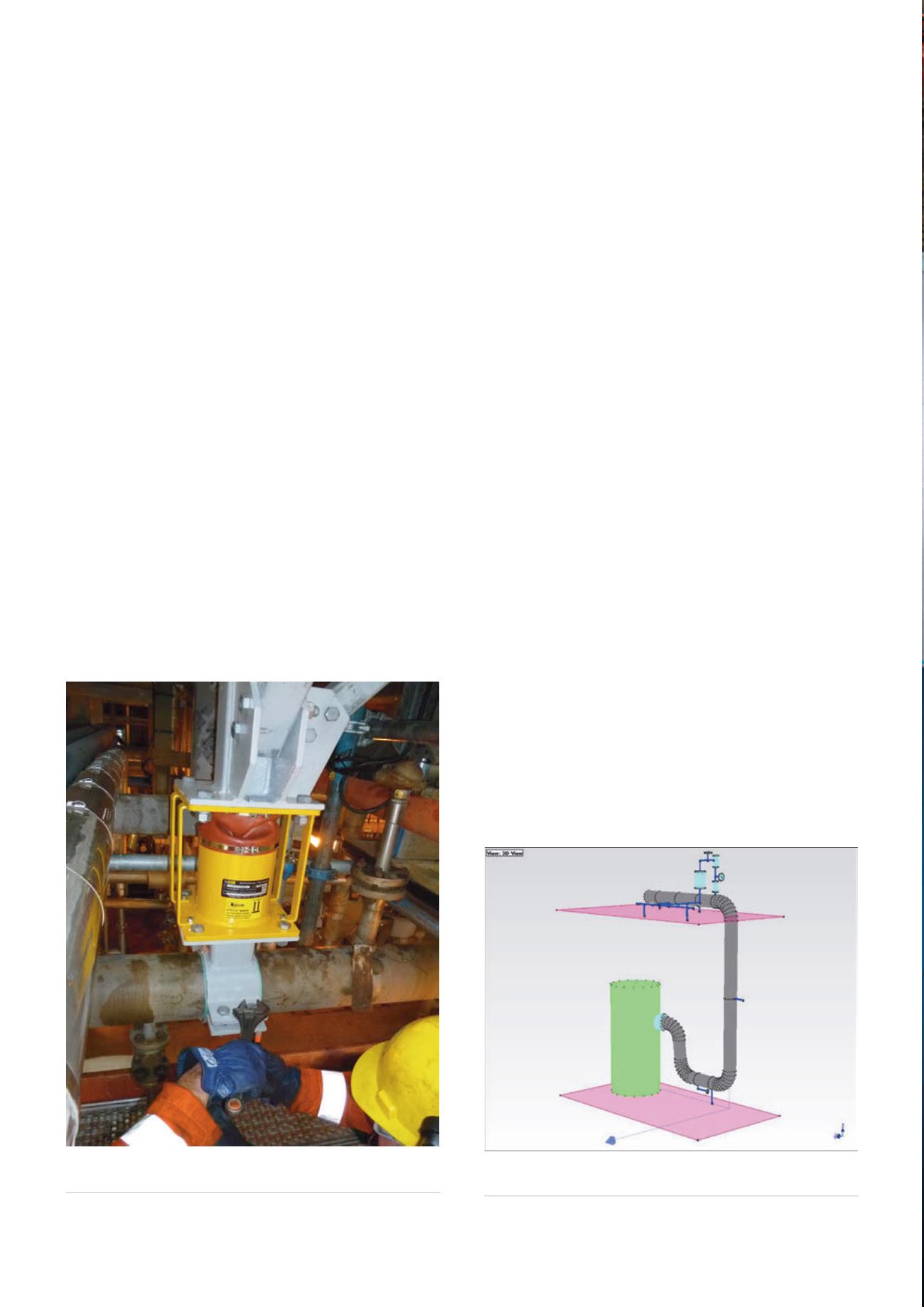
ODS analysis clearly identifies the vibration patterns
occurring under real life conditions, and so machinery and
structural supports can be adjusted and optimised in light of
those findings. When used as part of a proactive maintenance
schedule, particularly when this is done in partnership with an
experienced and recognised specialist in asset integrity and
performance, ODS analysis can help organisations to avoid
the threats posed by vibration-induced machinery problems,
and to make more efficient decisions around investment and
product lifecycles.
What is ODS?
ODS analysis is a means of visualising the vibration pattern
occurring in a structure. That vibration may result from the
structures own operating forces, or from forces external to it.
In ODS analysis, vibration is measured at various points and in
various directions within the structure – these are referred to
as degrees of freedom (DOFs).
Specialised software is used to convert the measurements
into appropriate formats, in particular, as animated graphic
representations of the structure being analysed. These
animations clearly show how and where the vibration is
causing problems, and to what degree. Typically, the structural
responses will be greatest at a number of specific natural or
forced frequencies where, at each frequency, the structural
deflection forms a particular mode shape (illustrated by
relative amplitudes and phases at each position on the
structure). In reality, all structural modes are happening at the
same time, however, by animating each different frequency
component of vibration separately, it is much easier for the
specialist to understand very complex data. The data is useful
for identifying a number of key factors:
)
)
Which excitation frequency produces the greatest
amplitude of vibration?
)
)
Which positions of the structure show the largest
displacement amplitudes?
)
)
Are there any positions of looseness of fixings or any
structural supports that appear to be too flexible?
)
)
Where would be the best positions to try to re-inforce the
structure to resist the observed directions and amplitudes
of vibration?
The analysis
There are four main types of ODS analysis:
)
)
Time ODS – used to investigate vibration as a function
of time, this method can visualise deflection shapes
generated by both transient and stationary signals.
)
)
Running orders ODS – used to evaluate vibration patterns
at specific orders as a function of rotational speed or
frequency.
)
)
Running modes ODS – evaluate vibration at given
frequencies as a function of rotational speed or frequency.
)
)
Frequency/spectral ODS – used to examine vibration
patterns at specified frequencies in stationary conditions.
Any item subject to ODS analysis has an almost infinite
number of DOFs that could be measured, but in practice
the number of these that are sampled during testing will
vary according to the size of the structure, the applications
and context involved. For pipework vibration assessments,
typically, vibration measurements would be taken at the
following positions: pipe bends, mid points of long spans, all
Figure 1.
Visco-elastic damper installed to prevent vibration
after ODS analysis.
Figure 2.
ODS Plot showing baseline model of relief valve
pipework.
48
World Pipelines
/
FEBRUARY 2016


